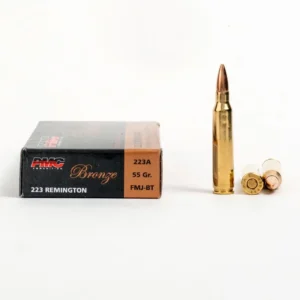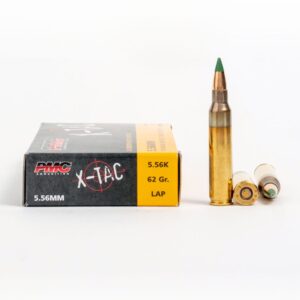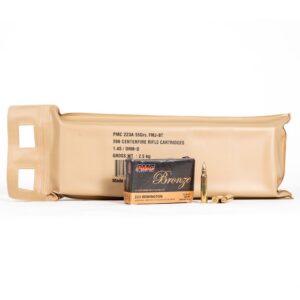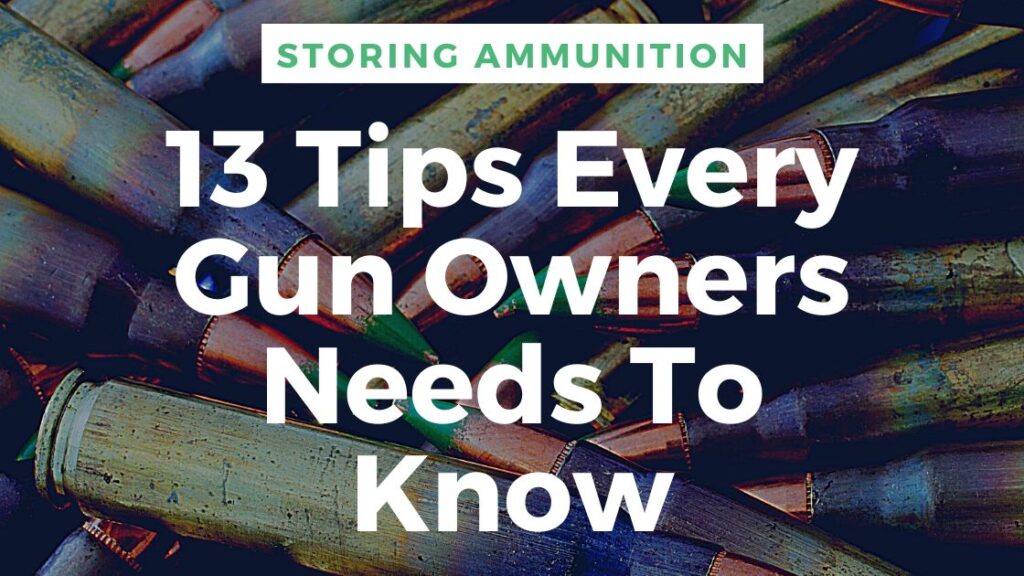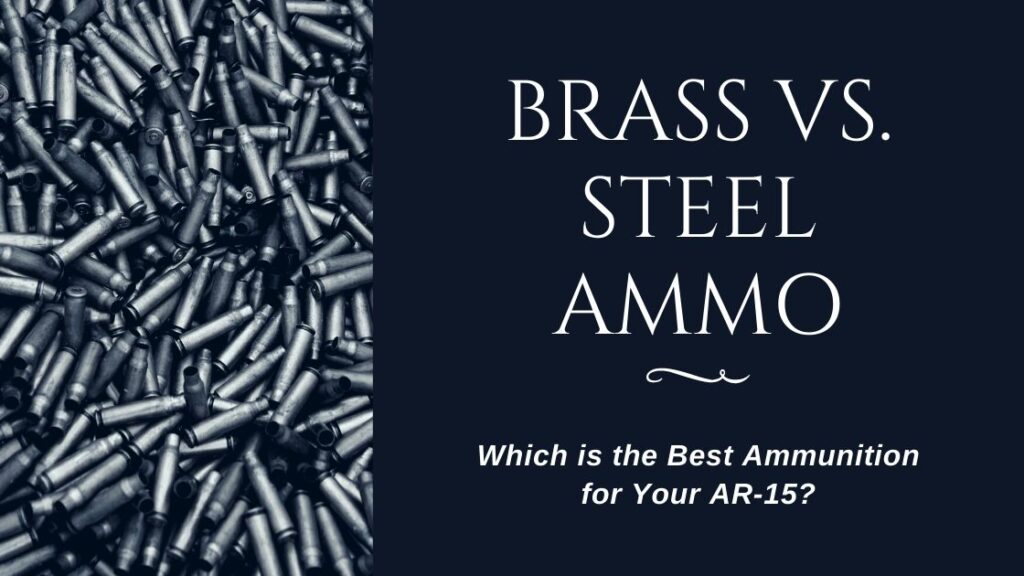Any beginner shooter faces challenges when it comes to selecting the right ammo for shooting. Bullets that are closely similar in all but a few aspects make optimum use under different conditions. In this article, we pit the 223 ammo vs 5.56. This will help you know the difference between 5.56 and 223, two calibers that have a pretty close resemblance.
- Is 5.56 the same as 223?
- What’s the difference between 223 and 5.56 ammo?
- 5.56 vs 223
- 223 ballistics
- 223 vs 5.56 ballistics
- 223 vs 5.56 stopping power
- 223 vs 5.56 ammo trajectory
- Highest grain 223 bullet
- 5.56 NATO bullet drop
- 556 NATO dimensions
- M193 vs M855
- 223 Meaning
- What is a NATO round?
- Brief Histories of 223 and 556
- Can you load 223 in 5.56 magazines?
- 223 Wylde vs 5.56
- 5.56 effective range
- 223 effective range
- 5.56 ammo vs 223 Rem accuracy
223 vs. 556: Are They the Same?
These two bullets have raised controversy in many areas. Some shooters claim the bullets are interchangeable while another group disputes these claims. The truth is that although they are almost similar, slight differences in the make of the 223 allow it to perform differently from the 5.56. It is important that you note the 5.56 is a military grade ammo while the 223 is civilian issued sporting ammo.
What’s the Difference Between 223 and 5.56 Ammo?
The first difference that is evident on the two bullets are the inscriptions on the bullets’ casing. The 5.56 only has a date and an additional symbol. The casing on the 223 has 223 Remington inscribed on the base. The military grade 5.56 base also has a crimp around the primer pocket unlike the 223.
5.56 vs 223
The 5.56 has a higher pressure measuring at 58,000 psi as compared to the 233’s 55,000 psi. Going by SAAMI standards, the lower pressure 223 can be used in the 5.56 chamber, but the 5.56 cannot be used in the lower pressured chamber for the 223 Remington.
The 5.56 also has a longer throat with a difference of .125 inches in length when compared with that of the 223 Remington bullet. The longer throat allows more holding capacity for gun powder in the 5.56, thus implying that it has a higher performance as compared to the 223 Remington.
The 223 bullet has dimensions that seal the contents tighter as compared to the 5.56 bullet. This compensates for the pressure difference in the two when fired from the same case. The smaller gun powder capacity on the 223 bullet, however, means that the 223 have lower power as compared to the 5.56.
223 Ballistics
External Ballistic tests on the 223 using a standard 55gr bullet leaving the barrel at 3,215fps reveals that the 223 fps slows down by less than half of the velocity at a 500-yard distance. The energy loss at this point is about 1000 pounds. The bullet also drops about 64 inches due to gravitational pull. All this happens in .741 seconds.
These ballistics stats mean that the 223 is accurate and has less jump. The accuracy is enhanced by the shorter lead when the bullet moves from the case to the barrel.
223 vs 556 Ballistics
Although they are of the same size, the two bullets have different results when shot from a rifle. Note that the 5.56 cannot be shot on a 223 chamber but the 223 chamber can be shot from a 556 due to the pressure difference.
The 556 packs more pressure and gun powder, meaning that it travels faster and is more accurate. Although the 223 can be shot from the 5.56 chamber, it will attain a lower speed due to its lower pressure.
The 556 is also a little heavier, which means that the effect of the atmosphere on its trajectory is less than it is on the 223 trajectory. This means the 5.56 travels a longer distance when the two are shot in the same atmospheric conditions.
223 vs 5.56 Stopping Power
The 223 Remington bullet is lighter and has less pressure in its chamber. The 5.56 is slightly heavier. Comparing the stopping power of the two bullets when fired from a 5.56 barrel means reviewing the impact of the velocity at which the bullet is travelling at when it stops. Leaving the guns’ barrel at the same speed will see the heavier 5.56 bullet drop faster than the 223. The 5.56 also maintains the higher velocity for longer, thus implying that the 5.56 velocity has a greater stopping power as compared to the 223 velocity.
In simpler terms, the stopping power means that the 5.56 will leave a larger bullet wound on the victim or target as compared to the 223 when they are fired from the same point.
223 vs 556 Ammo Trajectory
Testing results have proved that firing a 223 bullet from a 5.56 barrel alters the trajectory. This is attributable to the resulting higher jump and lead on the 223. Some barrels can compensate for these differences while others cannot.
Generally speaking, the trajectory change depends on the barrel on the rifle you will use. The barrel’s capability to compensate for jump and pressure changes will determine by how much the trajectory will be altered.
Highest Grain 223 bullet
The 223 has a wide range of bullet sizes that can fit in the chamber. You need to choose what is best for you under the conditions and what you are aiming at. Statistics have it that over 90% of bullets fired in the United States are for recreational purposes. For such situations, a typical 55-grain bullet would suffice. Higher grain bullets are available with the Remington having in stock 77 grain –OTM rounds that are typically used for military marksmen.
However, some 223 bullet weight can go up to 80 grains. These higher grain rounds do require use in a “throated” barrel due to their longer overall length. They simply can’t be run in a normal semi-automatic 223 rifle and instead must be used in bolt-action single shot rifles.
5.56 NATO Bullet Drop
The bullet drop on the 5.56 over a range of 500 yards is 54.2 inches. The start sees the bullet drop a little to about 1.75 inches and maintains this height up to 300 yards where it drops a further 8.3 inches. At 400 yards out, the drop is 24.56 with the 500-yard mark, making for the 54.2 inches drop.
5.56 NATO Dimensions
The 5.56 bullets measure 2.260 inches in overall length with the case measuring 1.760 inches. The bullet has a diameter of 0.224 with the neck measuring 0.253 in diameter.
The base of the bullet has a diameter of 0.377 inches. The case capacity for packing firing powder on the 5.56 is 28.5 gr. The bullet packs pressure of up to 54,114 psi.
M193 vs M855
The main difference between these two rounds is that the M193 is 55g lead core and is surrounded by a copper jacket with a boat tail. M855 5.56 ammo is a 62g bullet that has a steel core. The M855 also packs a steel penetrator tip at the end that helps it to get through obstacles easily.
Though the M855 seems like a “better” choice for you to buy because of the penetrator tip, your shooting needs will determine what is best for you.
For distances less than 100 yards, 5.56 M193 ammo gives better performance (higher velocity) due to its lighter weight (plus, it’s cheaper in bulk than M855 ammo). For longer distances, however, go with the M855 with the penetrator steel tip in order to combat wind-drift.
Keep in mind though, M855 is more prone to tumbling or “keyholing” when it hits a target. This can cause the round to actually penetrate less deeply and shifting in the target in unintended directions.
This is important especially if you’re using the rounds to hunt wild game. A tumbling round can both miss vital organs needed to drop the target (like the lungs) while also destroying meat tissue or rupturing bowels.
223 Meaning
Bullets come in different sizes and are meant for use with different guns. The 223 inscription on a bullet means that the bullet’s base diameter is .223 inches wide. Guns have specifications that guide you on the bullet size that is compatible for use with the specific gun. Ensure that you only load ammo that is supported by the gun you are using to avoid damaging the gun. The “Rem” in 223 Rem is short for Remington, the ammunition and firearms company that originally developed the caliber in the 1960s.
What is a NATO Round?
When you go to buy ammo, you will probably come into some that are labeled NATO rounds while other ammo is just regular ammo. The NATO stands for North Atlantic Treaty Organization that is a group of countries that have an agreement to standardize their ammo. NATO grade bullets are military grade and not meant for recreational use such a hunting game or shooting sports. Their standards are for military combat situations. The standardization helps troops in the field to share ammo with allies that use the same standardized ammo.
Brief Histories of the 223 and 5.56 Calibers
The 5.56 bullet round was first developed in the 1950s as an experimental cartridge for the then popular M-16 assault rifle. This new round became widely known due to its effectiveness and ease of use. The 5.56 solved the issues of heavy weight and eased control that were common with the 7.62 by 51 mm rounds that were being used at the time on the lower grade M-14 rifle.
After the 5.56 was officially taken into the military, the Remington company developed a civilian version of the 5.56 round. This is how the 223 came into being. As such, the 223 is a civilian version of the military grade 5.56 round.
Can You Load 223 Rounds in a 5.56 Magazine?
A common question with gun users is the compatibility of two cartridges with firearm magazines. The simple answer is yes, you can load 223 rounds in a 5.56 magazine. Just be sure to note that the ammo loaded in the 5.56 Magazine is actually 223 Rem ammo.
The opposite is even more important. If you load 5.56x45mm NATO ammo in a magazine or clip that is typically used in a 223 Rem chambered firearm, be sure to note it on the magazine or clip! This is due to the higher pressure created when a 5.56 round is fired versus a 223 round.
223 Wylde vs 556
Due to the potential danger that comes with firing a 5.56 bullet from a 223 chamber, innovative design manufactures have come up with the 223 Wylde rifle chamber. This chamber enables the safe firing of the 5.56 bullet from a 223 Remington chamber. It does this by having an identical chamber angle with that of the 5.56 chamber and .224 diameter on the free bore. The free bore also gives a tight fit to the 223 bullets, thus enhancing the accuracy and handling of 223 bullets fired from it.
5.56 Effective Range
When fired, the 5.56 bullet covers a distance of more than 1000 yards. However, due to natural conditions that include gravitational pull, the atmosphere, wind, and the angle the bullet is fired from, the 5.56 velocity reduces beyond distances of 400 yards. The effective range for 5.56 bullets, therefore, is between 400 and 500 yards. In this range, the bullet will have maximum effect on the target. Beyond this, expect less impact on the target you are aiming at. The long range makes this a good projectile for the battle field because soldiers can aim and drop targets who are far away with effectiveness.
223 Effective Range
Similar to the 5.56, the 223 covers a long distance when fired from the gun’s barrel. The bullet starts losing altitude and velocity with time reducing the impact that the bullet has when it finally reaches the target. The effective range for 223 is 400 to 600 yards. This makes it perfect for shooting game in the woods without getting too near. Controversy covers the use of the 223 in civilian hands due to its ability to drop long-range targets with high accuracy. It is, however, marked safe for use in civilian hands.
5.56 Ammo vs 223 Accuracy
The 223 ad 5.56 have the same size and are similar in most aspects. Both of these bullets are compatible with AR-15 bullet size specifications. SAAMI specs for each ammo size dictate the kind of rifle barrel that they should be fired from. It is imperative to note, however, that firing the bullets from the SAAMI specs recommended barrel does not have much of a difference in accuracy. However, if fired from the same 5.56 barrel, the accuracy of the 223 is altered slightly to make it less accurate.
In this regard the 5.56 comes out on top.
223 vs 5.56: Which Is Better?
After comparing the 223 vs 5.56 we can comfortably say that the two bullets are similar in most aspects. The 223 in civilian use offers great accuracy and precision when hunting while the 5.56 is a good projectile on the battlefield. You, therefore, must choose the bullet that suits your needs best depending on where you will be shooting.
Now that you know the differences between these two calibers, be sure you know how you should be stockpiling your ammo!
-
Product on sale
 223 Rem – 55 gr FMJ-BT – PMC (223A) – 1000 Rounds$469.00
223 Rem – 55 gr FMJ-BT – PMC (223A) – 1000 Rounds$469.00 -
Product on sale
 5.56x45mm – 55 Grain FMJ – PMC (5.56X) – 1000 Rounds$479.00
5.56x45mm – 55 Grain FMJ – PMC (5.56X) – 1000 Rounds$479.00 -
Product on sale
 5.56x45mm – 62 Grain FMJ M855 – PMC (5.56K) – 1000 Rounds$489.00
5.56x45mm – 62 Grain FMJ M855 – PMC (5.56K) – 1000 Rounds$489.00 -
Product on sale
 223 Rem – 55 gr FMJ-BT – PMC Battle Packs (223A-BP) – 1000 Rounds$499.00
223 Rem – 55 gr FMJ-BT – PMC Battle Packs (223A-BP) – 1000 Rounds$499.00 -
 223 Rem – 55 gr FMJ-BT – PMC (223A MB) – M2A1 Ammo Can – 840 Rounds$449.00
223 Rem – 55 gr FMJ-BT – PMC (223A MB) – M2A1 Ammo Can – 840 Rounds$449.00 -
 223 Rem – 55 Grain FMJ – Federal American Eagle (AE223JX) – 500 Rounds$299.00
223 Rem – 55 Grain FMJ – Federal American Eagle (AE223JX) – 500 Rounds$299.00


